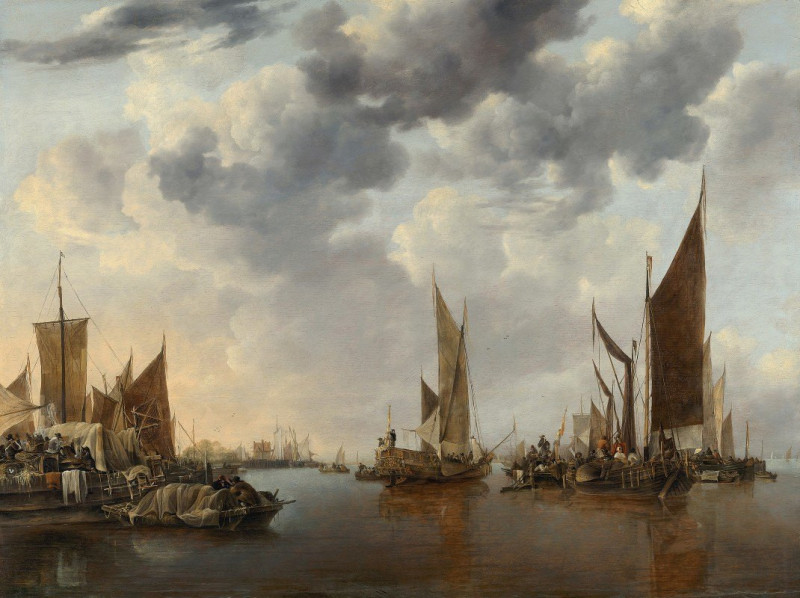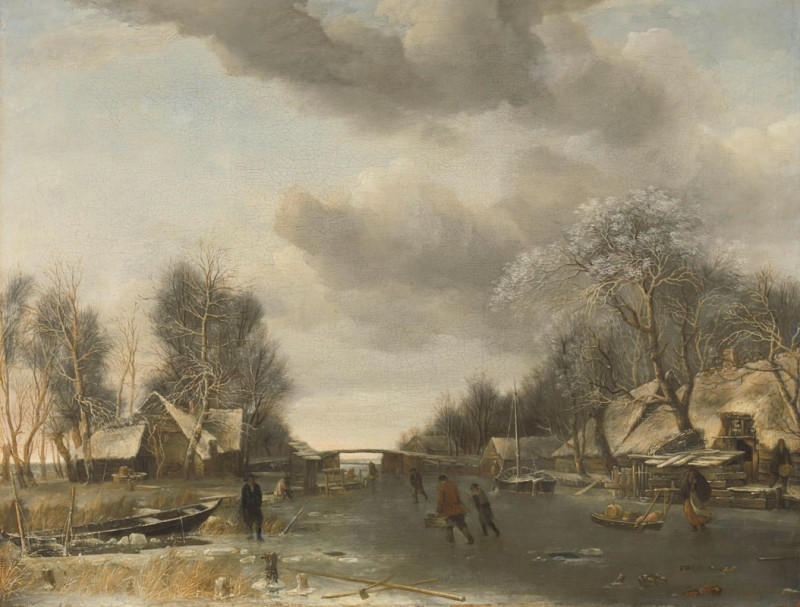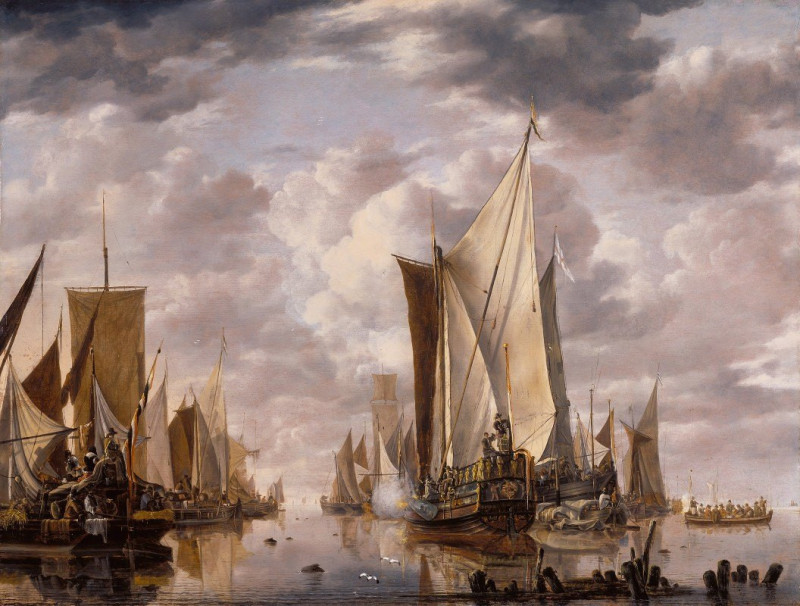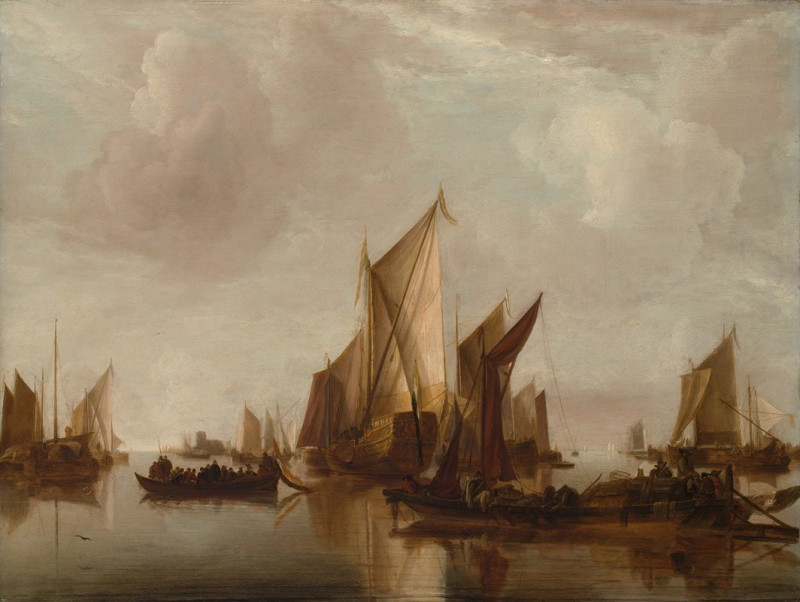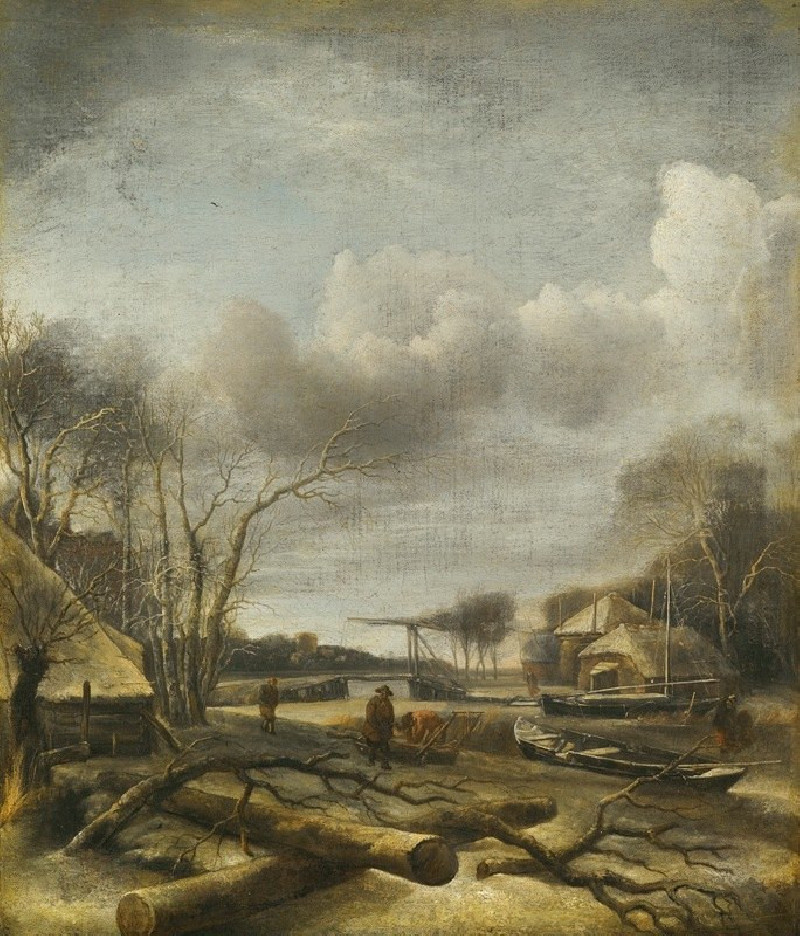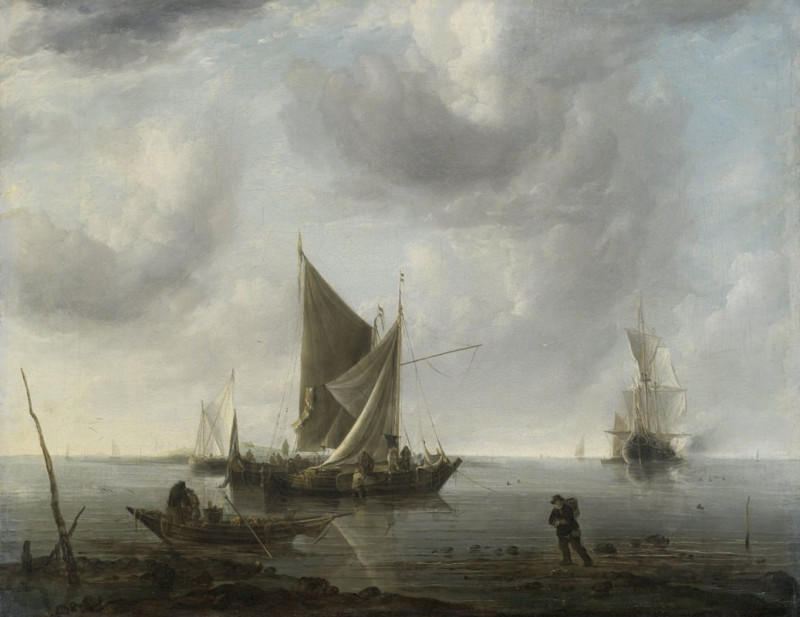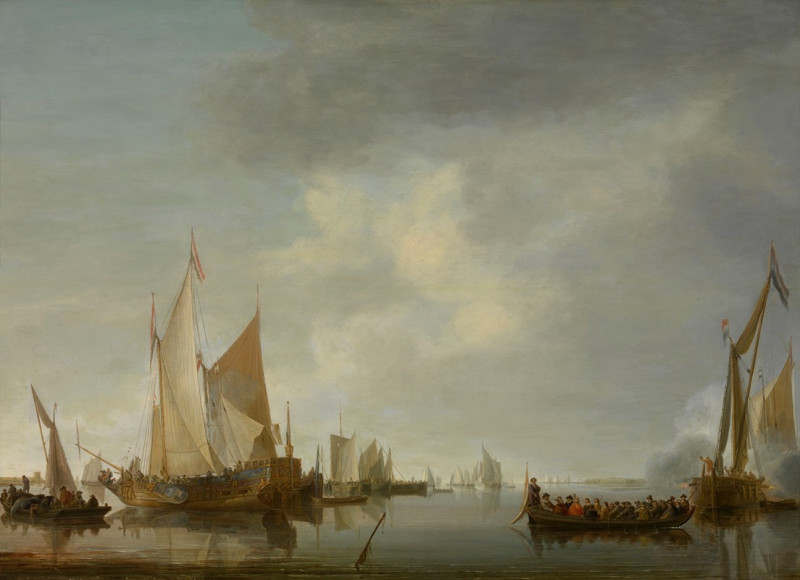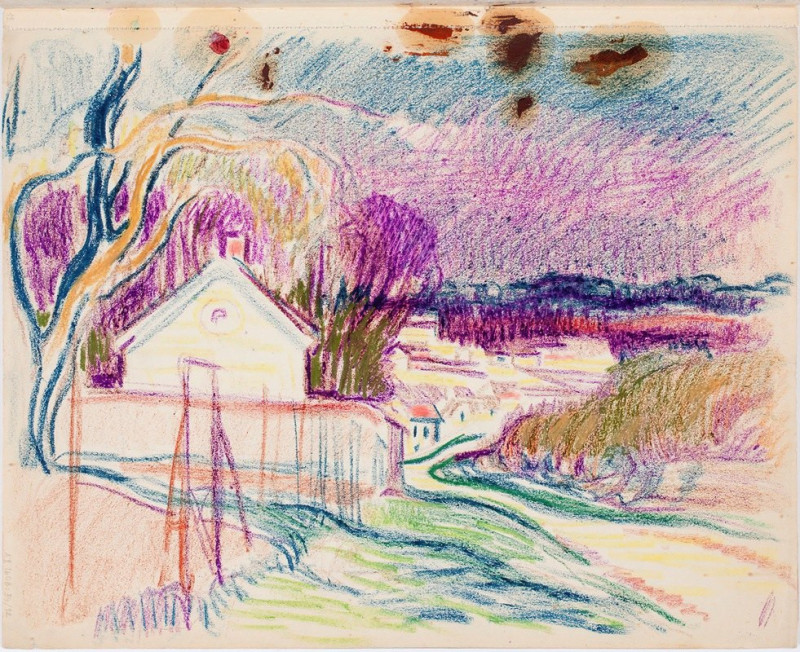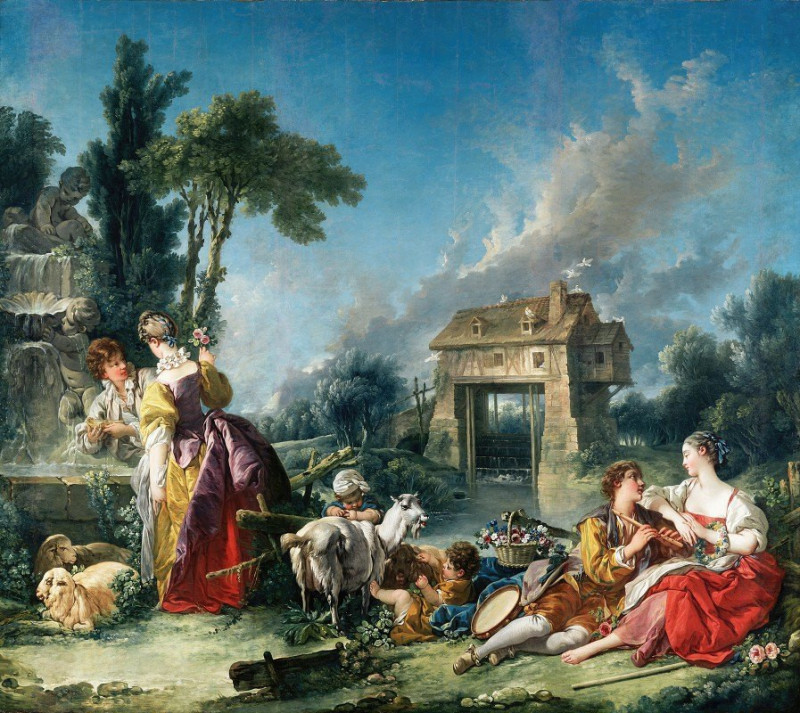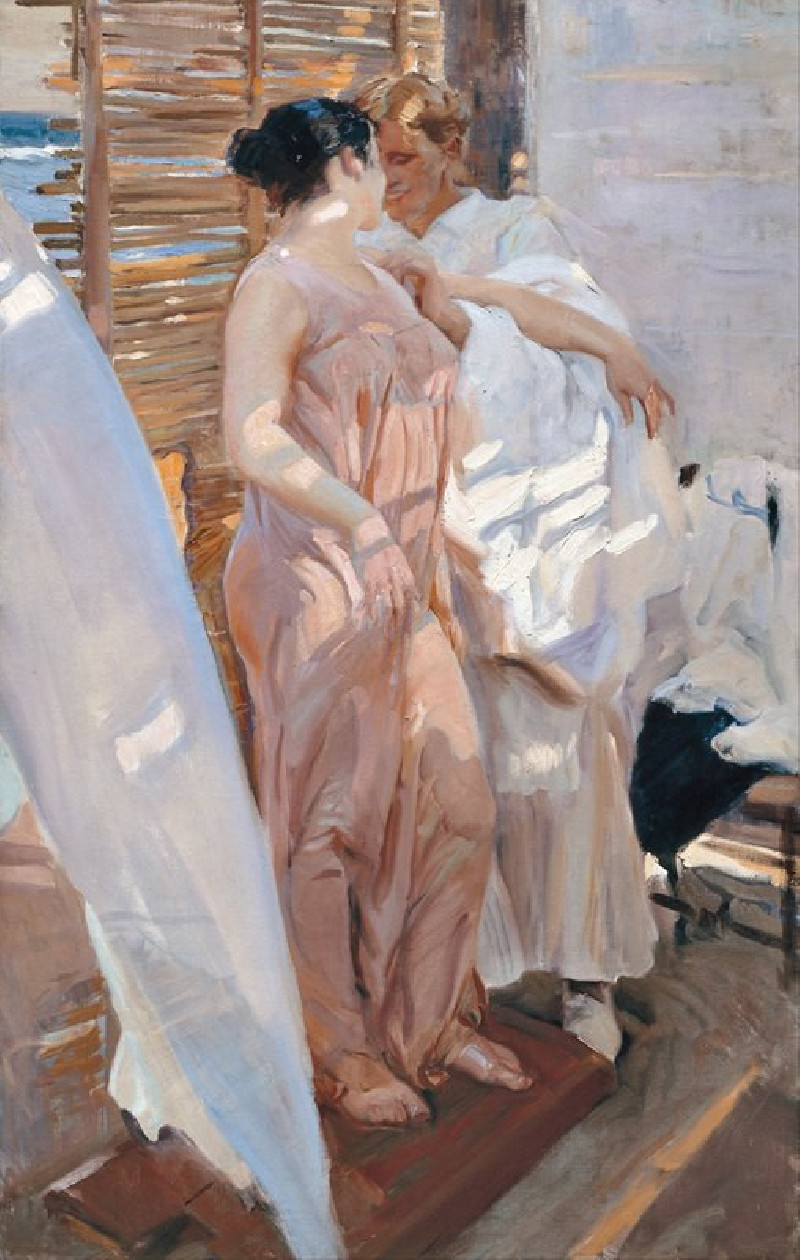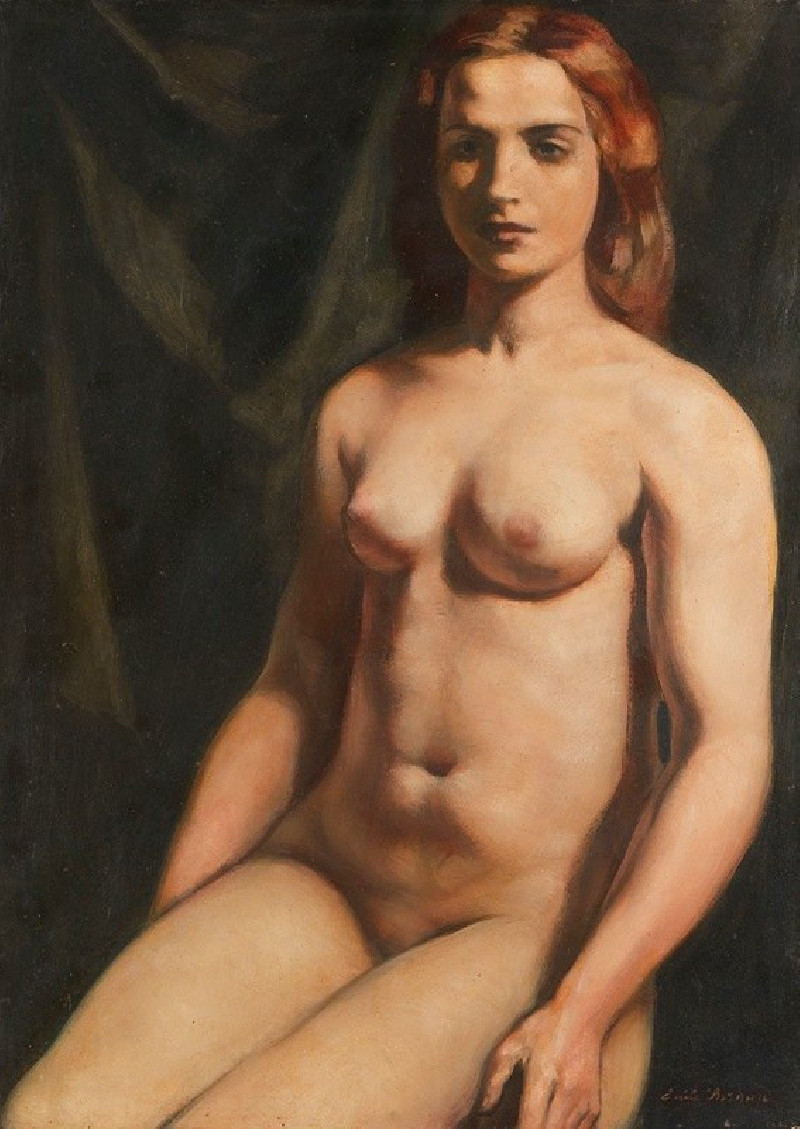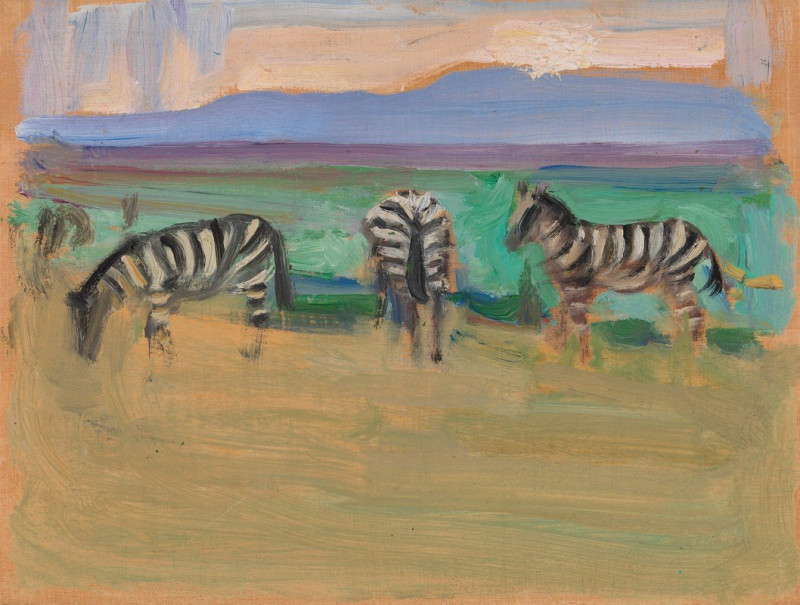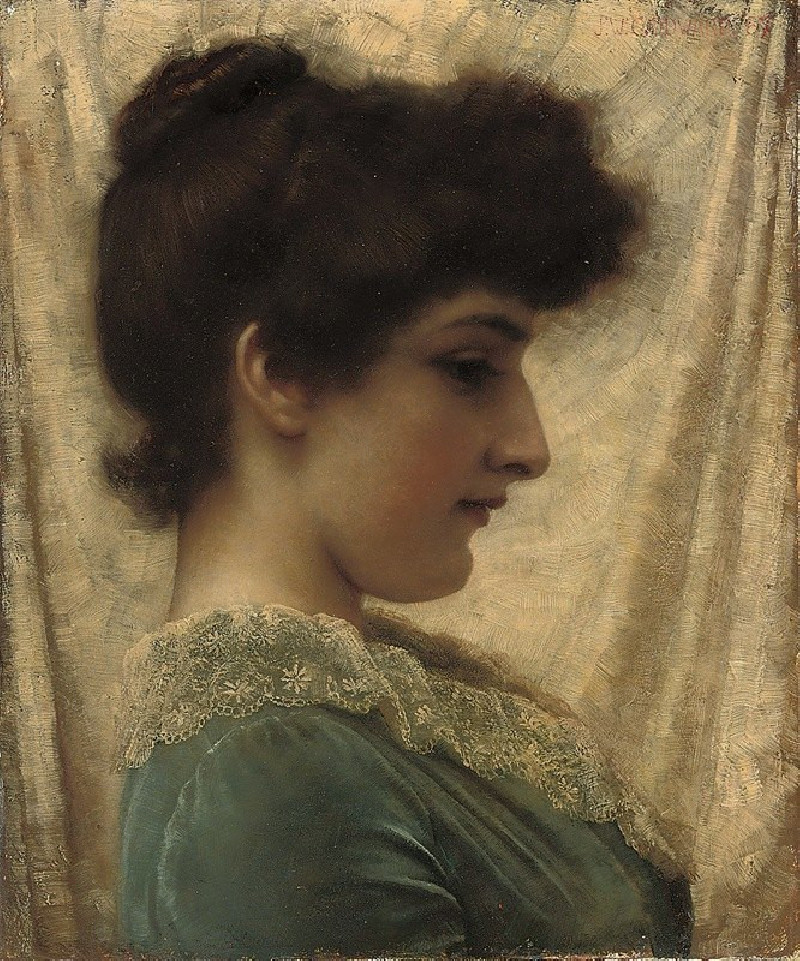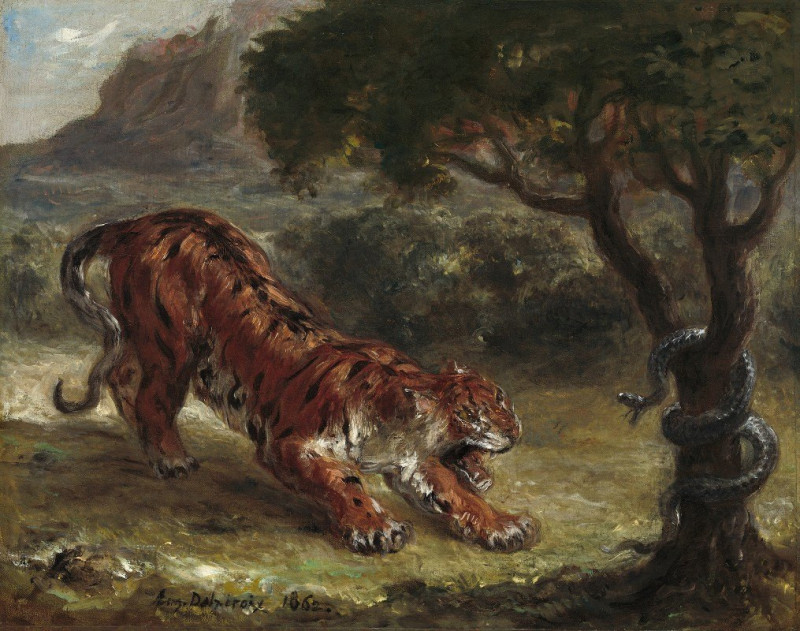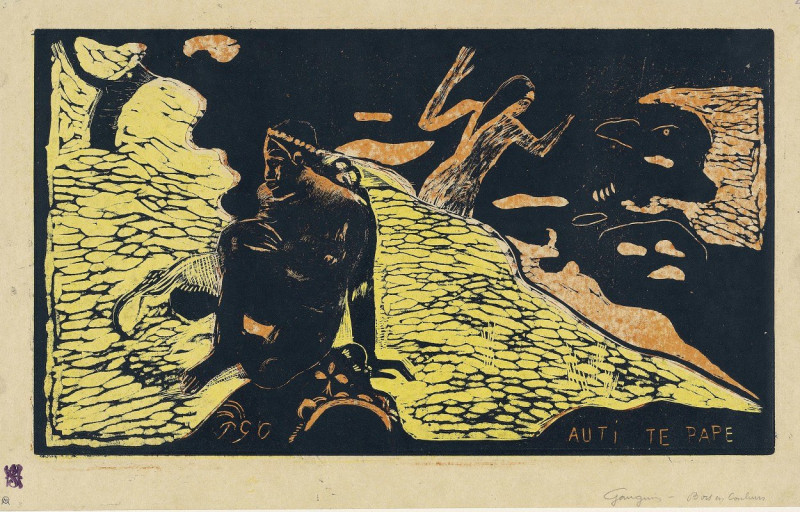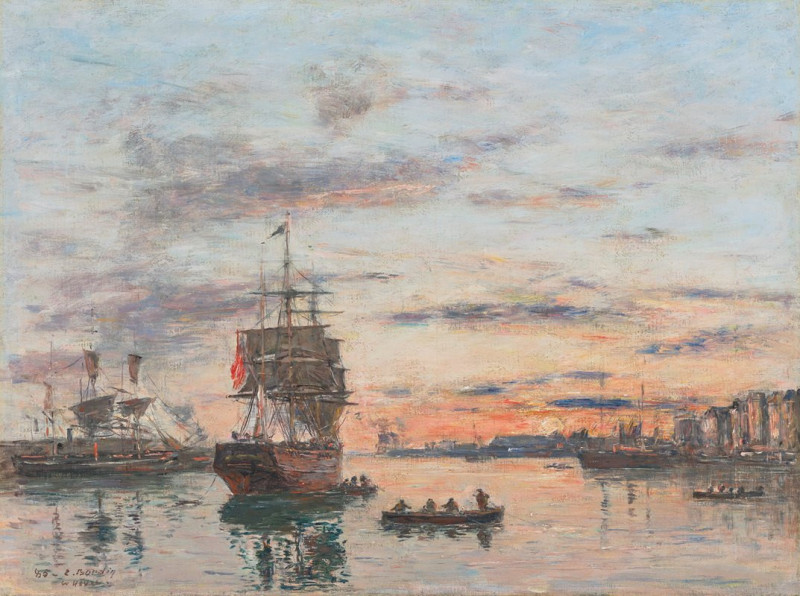Seascape with Ships (c. 1660)
Technique: Giclée quality print
Recommended by our customers
More about this artwork
Our latest featured artwork, *Seascape with Ships* (circa 1660) by Jan van de Cappelle, captures the placid ambiance and subdued tones of a bustling maritime scene. This exquisite painting invites viewers into a 17th-century harbor where calm waters reflect a vast, evocative sky filled with billowing clouds, suggesting a narrative of daily life intertwined with nature's vastness.The canvas is masterfully divided between the expansive sky and the detailed activity at sea level, portraying an array of ships and boats at various distances from the viewpoint. These vessels, ranging from large sail ships poised majestically in the water to smaller rowboats bustling near the shore, are depicted with meticulous attention to detail. The artist’s use of light and shadow, combined with a predominantly soft palette, lends the scene a lifelike yet gentle quality.In the foreground, subtle human interactions are observable—sailors and townspeople engage in trade, navigation, and conversation, illustrating the lively commerce and communication essential to maritime life of the era. The painting's depth is enhanced by the accurate rendering of atmospheric perspective, drawing the eye from the detailed activities in the foreground across the tranquil expanse of the water to the horizon.Jan van de Cappelle, renowned for his marine landscapes, demonstrates in this work his unparalleled ability to capture both the grandeur of the seascape and the intricate dynamics of daily life. This painting not only reflects his technical prowess but also his profound appreciation for the interplay of light, water, and sky.*Seascape with Ships* is more than just a visual delight; it is a portal to the past, allowing contemporary viewers a glimpse into the maritime culture of the Dutch Golden Age.
Delivery
Returns
Jan van de Cappelle was a Dutch Golden Age painter of seascapes and winter landscapes, also notable as an industrialist and art collector. He is "now considered the outstanding marine painter of 17th century Holland". He lived all his life in Amsterdam, and as well as working as an artist spent much, or most, of his time helping to manage his father Franchoy's large dyeworks, which specialized in the expensive dye carmine, and which he eventually inherited in 1674.

